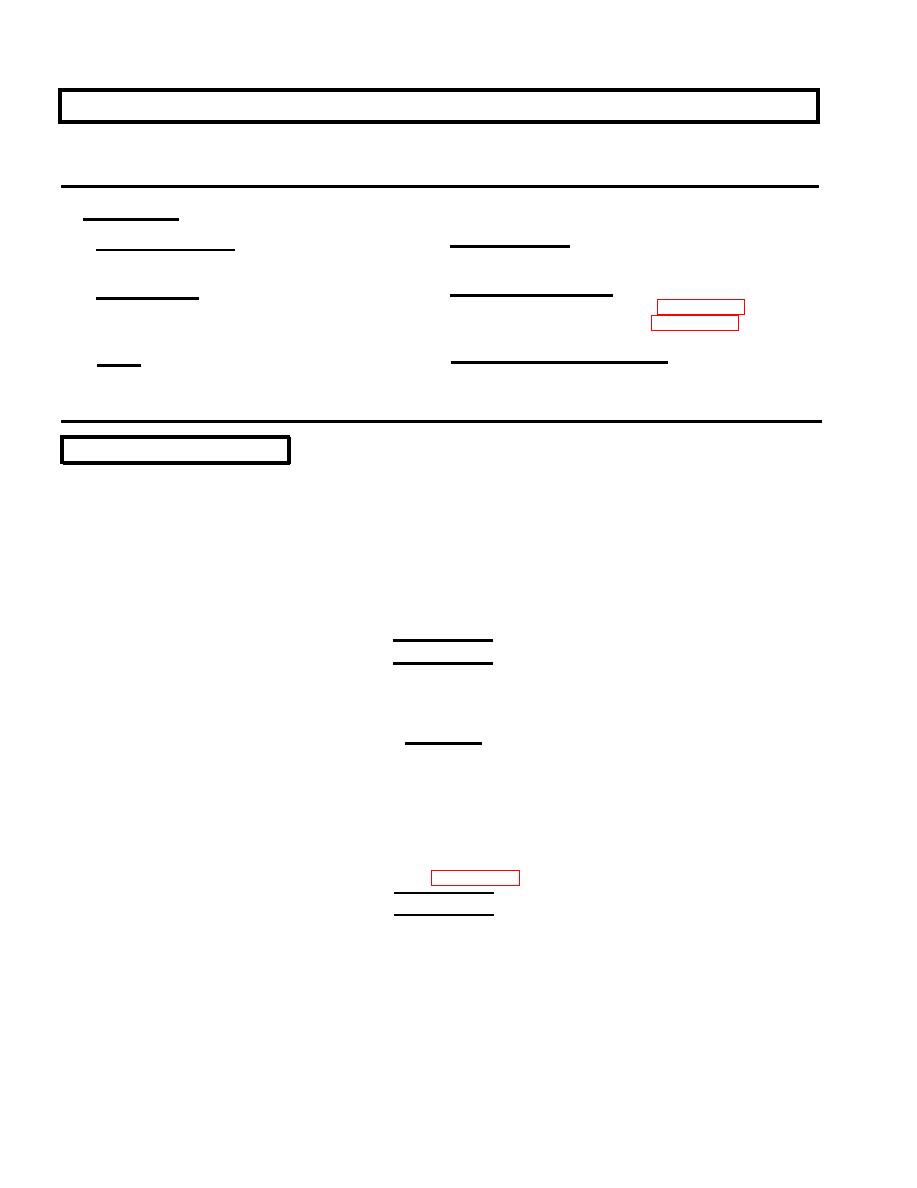
TM 9-2320-272-24-2
3-462. HUB AIR SEAL LEAK TEST
THIS TASK COVERS:
b. Rear Hub Leak Test
a. Front Hub Leak Test
INITIAL SETUP:
MATERIALS/PARTS
APPLICABLE MODELS
Antiseize tape (Appendix C, Item 72)
M939A2
EQUIPMENT CONDITION
SPECIAL TOOLS
l Front wheel valve removed (para. 3-456).
Test kit (Appendix E, Item 137)
l Rear wheel valve removed (para. 3-457).
Air gauge (Appendix E, Item 4)
GENERAL SAFETY INSTRUCTIONS
TOOLS
When working with compressed air, wear eyeshields
General mechanic's tool kit (Appendix E, Item 1)
and ensure source pressure does not exceed 30 psi
(207 kPa).
a. Front Hub Leak Test
NOTE
Air seals may not retain prescribed pressure immediately after
installation. Pressure will be maintained after seals have been in
operation and have seated on spindle.
Install O-ring (8) and air manifold (9) on drive flange (7) with washer (5) and screw (4).
1.
2.
Install short end of spacer (3) on air manifold (9) with washer (2) and screw (1).
3.
Install plug (6) on air manifold (9).
4.
Remove hose (11) from bulkhead fitting (10) and install air pressure gauge on hose (11).
WARNING
Eyeshields must be worn when working with compressed air.
Compressed air source will not exceed 30 psi (207 kPa). Failure to
do so may result in injury to personnel.
CAUTION
Ensure external air source is known to be as clean and dry as air
supplied by vehicle. If in doubt, use the vehicle's air supply.
Contamination may cause damage to CTIS.
5.
Apply air pressure to front hub until air pressure gauge reads 80 psi (552 kPa).
6.
Observe air pressure gauge for one minute. Pressure should not drop below 70 psi (483 kPa). If air
pressure dropped below 70 psi (483 kPa), check connections using soapsud method.
7.
If connections are tight, replace hub air seals (para. 3-460 or 3-461).
WARNING
Air pressure will create airborne debris. Use eye protection.
Failure to do so may result in injury to personnel.
8.
If air pressure remained at 70 psi (483 kPa) or above, release air pressure through valve on air
pressure gauge.
9.
Remove air pressure gauge from hose (11) and connect hose (11) to bulkhead fitting (10).
3-1264

